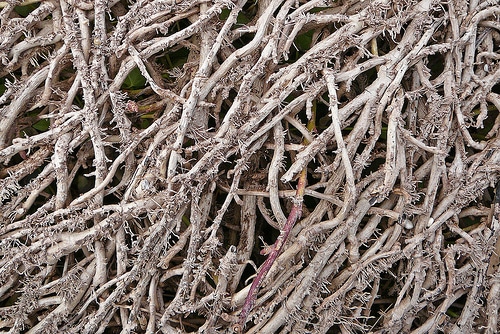In this article, we will discuss chemicals used to keep roots away from cesspits. Every home should be equipped with all the necessary components to function ideally. One very important part of any property is the cesspit. Though it is a veteran system in treating household waste, it can still be found in many households across the country. The cesspit is a simplified septic system that utilizes a perforated tank to separate the clear effluent from the sludge. Like any component or element in your property, the cesspit should be properly maintained and regularly cleaned. As a responsible homeowner, you should see to it that your cesspit is not exposed to factors that could destroy or disable the normal functions of the cesspit. Remember that it is a essential component of your household because it separates the toxic wastes from your living spaces.
Several factors contribute to your cesspit’s malfunction or failure. Root systems of plants surrounding the cesspit slowly but surely cause trouble for the cesspit. They inevitably put a stop to the normal wastewater treatment that the cesspit performs on a daily basis. If you have just realized that your cesspit is near a collection of plants or trees, then you would have to expect root penetration issues in your cesspit system. You can never blame the trees or plants for getting into your cesspit. They naturally extend their roots to search for abundant sources of water and nutrients and in this case, your cesspit is the perfect supplier. It is only natural for them to get into every gap or crevice of your cesspit to gain access to the untreated wastewater. As the roots get more nutrients from the cesspool, they force themselves to a point where they cause cracks and larger gaps. These compromise the stability and the functionality of the cesspit system. When it comes to dealing with roots in your cesspit, take note that prevention is the most effective step. Here are some facts that you should consider in dealing with roots in your cesspit:
- Good location
If ever you are one of those fortunate homeowners who are given the opportunity to choose the location for their cesspits, then you should remember to position it in an area where there are no plants or trees. See to it that the cesspit will be installed in a vacant spot. There should be no trees or shrubs near or over your cesspit system. These will grow bigger and their roots will go deeper.
- Root penetration
Understand how the roots of a plant work. The roots grow as the plant grows. The larger the plant the broader and deeper the root system goes. Roots find their way into the smallest of cracks just to search for a regular food source of water and nutrients. They could go through cement tanks and metal pipes. Plants are patient. They use time to make them grow and gain enough pressure to penetrate anything in their way. Once the roots enter an area like the cesspit, they will create a strong mesh to create blockages. As a result, the cesspit could no longer perform its treatment work on the household wastes.
- Outcome of a invasion
The blockage created by the root system will slow down the outflow of the cesspit. The amount of clear effluent that comes out of the cesspit will be reduced. This leads to wastewater backup into the house and onto your property. Eventually, the outflow will completely stop and the untreated wastewater will flood the area.
The roots should definitely be stopped from further invading the cesspit. Once the root systems have penetrated the cesspit, it will cost you a lot especially if the roots have to be removed manually. The local cesspit experts should be called for this treatment. There are much inexpensive means to remove the roots. Experts consider chemicals used to keep roots away from cesspits and to remove them completely as well. Copper sulfate crystals are common components in such root killers. These chemicals make sure that root systems won’t bother your cesspit again because they easily dry out the roots and the resident cesspit bacteria decompose them.
